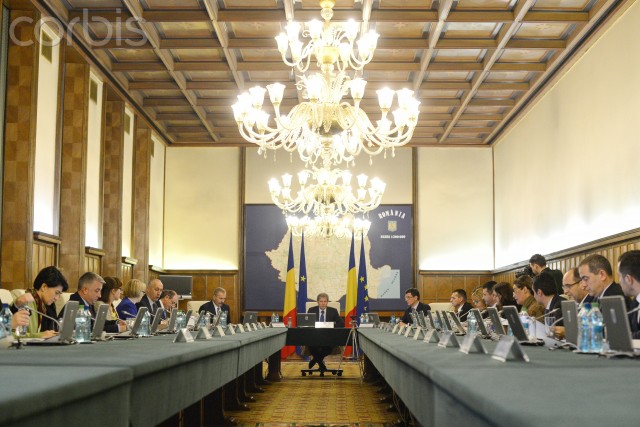By Gabriela Borz (University of Strathclyde)
On Tuesday the 17th of November, a new technocratic government led by Dacian Cioloş was approved by the Romanian Parliament with 389 votes in favour and 115 against. Invested with a short mandate of one year, it is the third technocratic government Romania has had in the last 25 years.
What all technocratic governments – as a government by experts selected on a meritocratic basis – have in common, is investiture at a time of political crisis. The origin of the new Cioloş government stem from a series of events which escalated with the resignation of the former cabinet led by PM Victor Ponta. The resignation followed a fire incident at a rock concert venue where more than 50 young participants have lost their lives. The event has triggered suspicion over the legality and accuracy with which the relevant administrative authorities have granted the necessary authorizations. The incident has generated large public unrest with street protests in the capital city and across the country. More than 10,000 people protested peacefully against the government and ultimately against corruption and the entire political class. This reaction was in fact the culmination of a period of high societal dissatisfaction and distrust in political parties. Regular citizens became exasperated with the ongoing corruption scandals, many of which involved members of the former cabinet, including the former prime minister, all of whom previously refused to resign from their positions. The protests indicate a changing Romanian society whereby citizens’ demands from the political class are high; as is the confidence with which the national anti-corruption agencies are being approached by the members of the general public. For the past 10 months, the complaints from citizens and firms to the National Directorate against Corruption (DNA) were reflected in 40 percent of the cases under investigation.
The new technocratic ministers are experts with relevant experience in their own field, experience acquired either in Romania or abroad. For example, the health minister is the former Director of the Oncological Institute of Cluj-Napoca, one of the largest Romanian cities. The minister of European Funds has worked for the European General Directorate for Regional Politics and the European Bank for Reconstruction and Development. The minister of finance was an economic analyst for the European Commission and has also worked for more than 10 years at the International Monetary Fund.
The new Government admits in its draft program that it cannot undergo all the necessary reforms in Romania in a timeframe of one year. The priorities lie with reforms in administration, finance, justice, infrastructure, improvement in the absorption of EU funds, education. While it inherits a stable economic position, with a registered economic growth rate of GDP per capita of 3.6 % compared to last year according to the National Institute for Statistics, in order to implement various projects, the new team needs political support. This, as the major parties (The Social Democratic Party and The National Liberal Party) postulate, is conditional on the government’s agenda. Furthermore, apart from its short term in office, the new cabinet faces the hurdle of working with a politicized inefficient administration.
As for the link between technocracy and democracy – many political voices, such as the opposition ALDE party, already mentioned through its leader that ‘technocracy kills democracy’. Others, starting even with Plato and finishing with contemporary political scientists (EPISTO project, Arena Centre for European Studies Norway) would however argue that a technocratic government is characterized by a knowledge based decision-making while focusing on outcomes, efficiency and rationality. The rule by a few experts, unelected and who lack popular legitimacy may seem to endanger democracy known to us as the rule of the people. Nonetheless, if not permanent and appointed on a short-term basis, it could potentially improve the delivery of public goods to its citizens.
There is evidence to suggest that some elements of deliberative democracy can also be found in the working of the new government. Citizens were consulted and were given the possibility to get involved in the process of governance. Out of the 21 ministries, one new and unprecedented portfolio is that of the Minister for Public Consultation and Civic Dialogue. This position can be interpreted as the result of the street protests which led to the resignation of the former PM Victor Ponta and his cabinet. The ministry has a clear mandate to consult with members of the civil society and to listen to their proposals and concerns.
Additionally, before appointing the new PM, the Romanian president held consultations not only with political parties but also with representatives of the ’street’. Furthermore, at the time of the protest, the presidency made available an e-mail address where public requests and recommendations could be sent before the new cabinet was appointed.
All in all, within a one year mandate, the technocratic government can improve some governance indicators in Romania, and can also contribute to democratic stability. The paradox of the entire situation is that its performance will not depend entirely on its technocratic expertise, but of on the ability of the prime minister to negotiate with the political class and cut deals in order to pass reforms.
Photo source: http://www.corbisimages.com/stock-photo/rights-managed/42-79363635/romania-dacian-cioloss-cabinet-first-government-meeting


